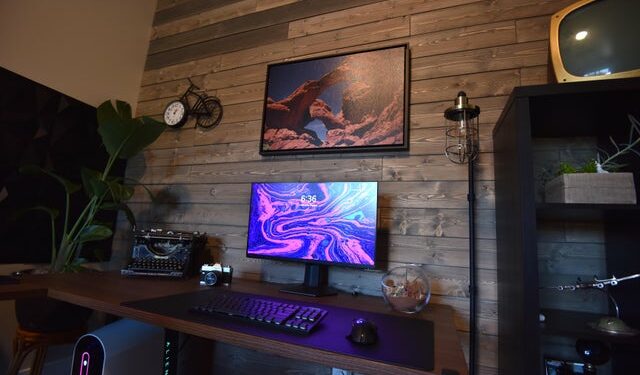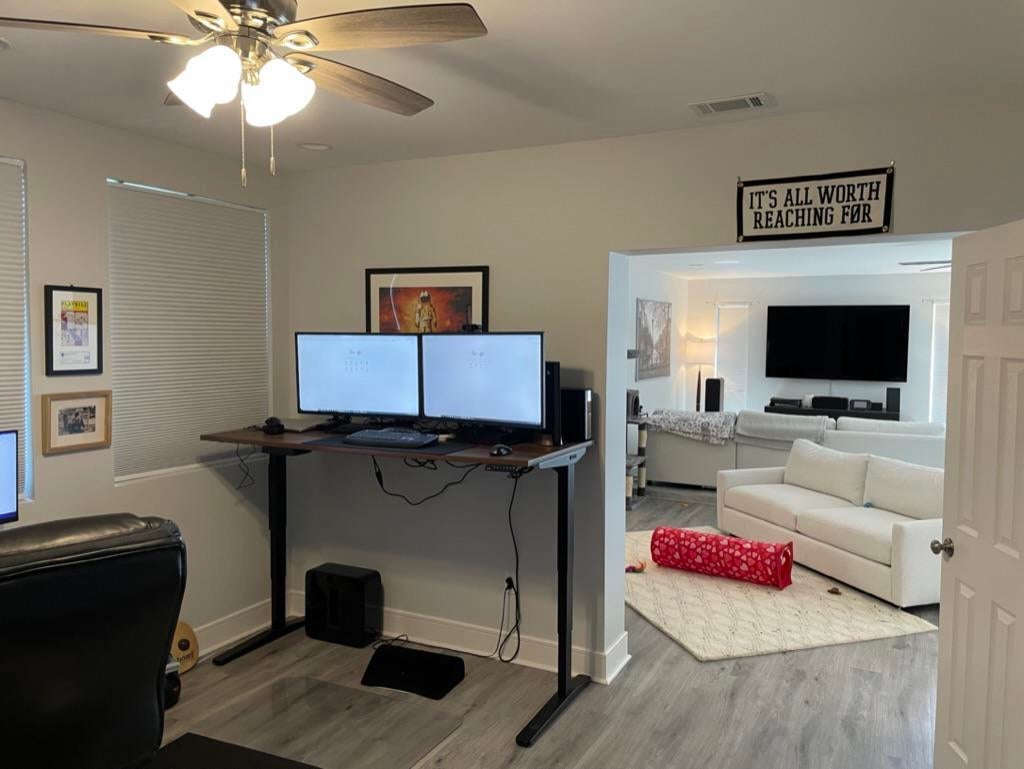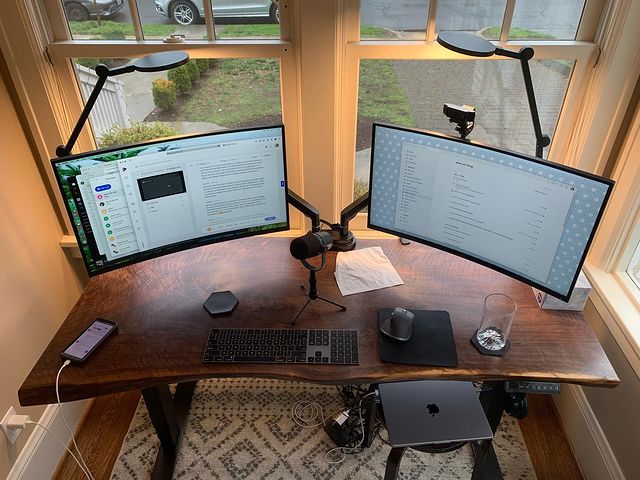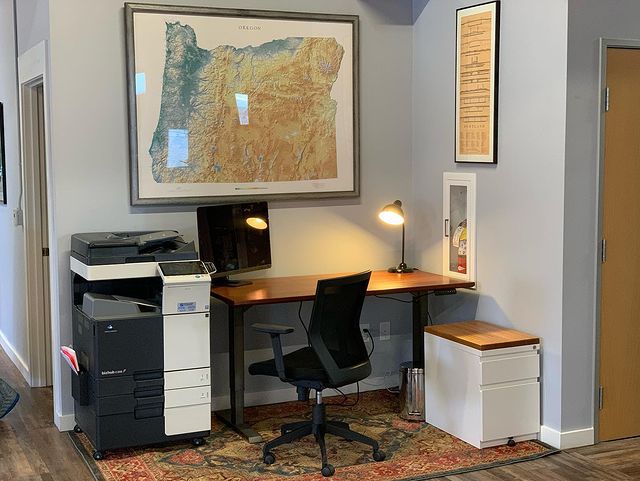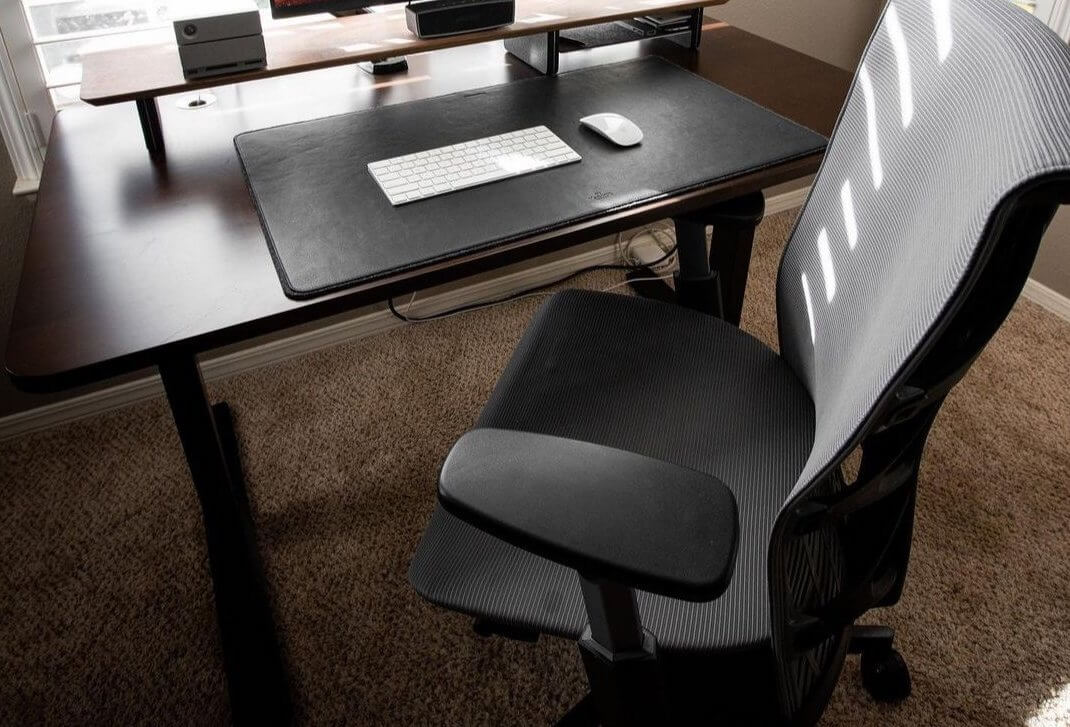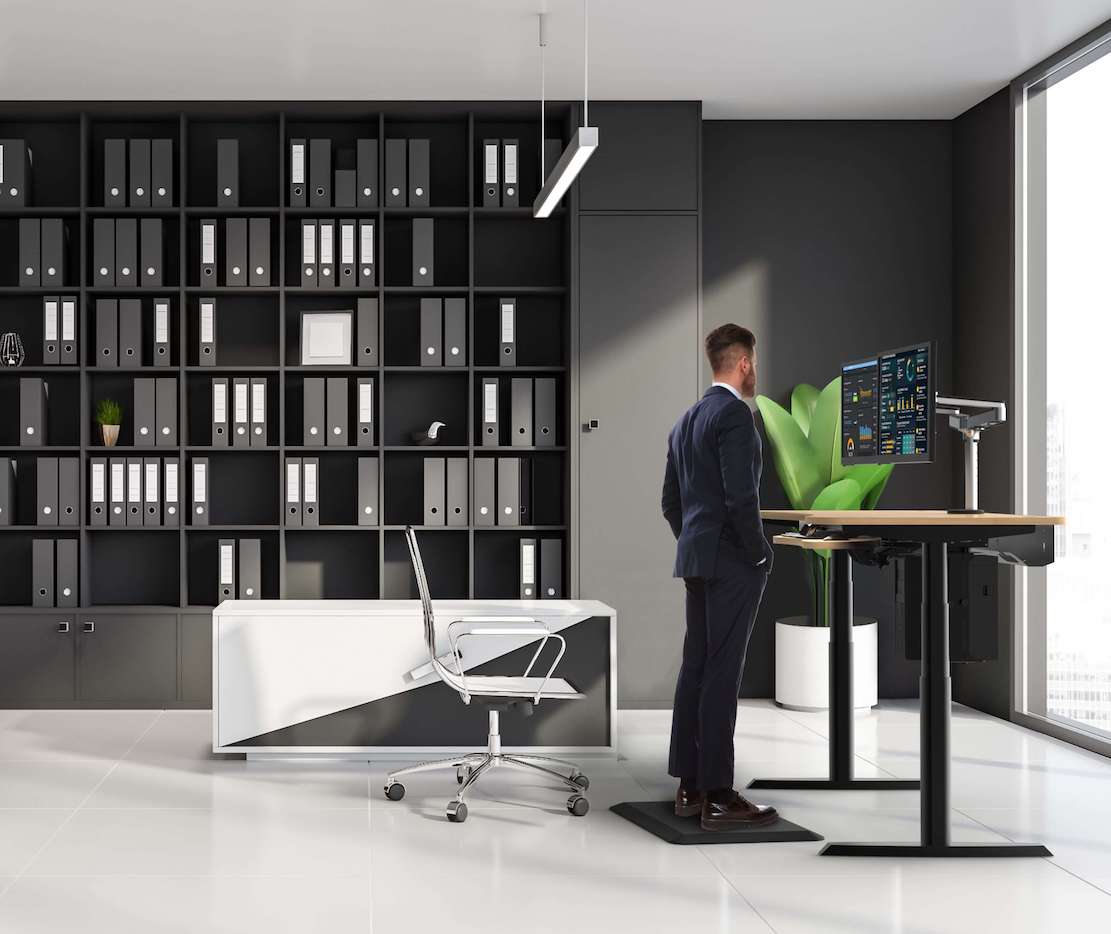Standing desks seem like a great idea, but they can lead to back pain and discomfort. If you’re going to use one, get it with the knowledge that will be necessary.
Standing up at work for 30 minutes per hour is essential if you want to be healthy and productive. A University of Waterloo professor has found that his research shows people should stand instead of sitting all day long, even though experts have always advised the opposite since 1920s.
It’s true what they say: too much time spent on our feet can make us sick or inflexible, but there are many benefits when we rise – not only do upright positions improve posture which leads directly into better health outcomes overall; standing also reduces blood pressure levels among others things so now might actually be the time to invest in a standing desk or converter.
If you’re just starting out, it might be tough to go from sitting all day long to standing up, so start small by adding 5-10 minutes at a time and work your way up. Soon enough, you’ll find that you’re more comfortable standing and working for longer periods of time.
As the amount of time you can stand comfortably at a standing desk will vary depending on your height, weight, and physical condition. However, as a general guideline, you should aim to stand for about two hours at a time, with regular breaks to move around and stretch.
If you’re starting to feel uncomfortable or cramped after standing for a while, it’s a sign that you’ve been standing too long and need to take a break. Try sitting down for a few minutes or even taking a short walk to get your blood flowing again.
The health risks of working at a standing desk
A standing desk is not for everyone. If you have never standing before, it can take a toll on your body. You might experience pain in your feet, back, neck, and shoulders.
The foot muscles are constantly working to keep you stabilized and supported while you are standing. If you are not used to this type of work, the muscles can get tired and sore. A footrest can help to take the pressure off of your feet and give them a break. There are also many different types of footrests available, so find one that is most comfortable for you.
The lower back, neck, and shoulder muscles are also working hard to keep you upright while standing. If you are not used to this type of work, the muscles can get tired and sore. To help reduce the strain on your back, make sure that you are following the proper ergonomic guidelines when setting up your workstation. You might also want to try using a lumbar support cushion.
Prevent heel pain
High heels are not recommended for using a standing desk. The heel is in an unnatural position and can cause pain in the feet, back, neck, and shoulders.
Instead, try to find a pair of supportive shoes that will help absorb some of the shock from standing all day long. This will help to prevent heel pain and other discomfort.
If you are experiencing pain in your heels, it might be a sign that you need to switch to a different type of shoe.
Some people find that standing causes too much pain in their feet, while others find that sitting makes their plantar fasciitis worse.
The best way to figure out what works best for you is to try both options and see which one gives you the most relief. If you find that one option works better than the other, stick with that option. If neither option seems to help, talk to your doctor about other treatment options.
Here are a few tips to experience more comfortable:
– Invest in a good footrest: This’ll take the pressure off of your feet and allow you to stand for longer periods of time
The footrest should be placed in front of you so that your feet are resting on it while you are working. Make sure that it is at the correct height and adjustable so that your knees are slightly bent when you are standing. It should also have a nonslip surface to keep you from slipping while you are working.
– Wear comfortable shoes: Avoid high heels and opt for supportive shoes that will help absorb some of the shock from standing all day long. This can lead to pain in the feet, back, neck, and shoulders.
Wearing supportive shoes is also key – many people think that flats or sandals are the best for working at a standing desk but really, you’ll want something with a good arch support to keep your feet from getting tired too quickly.
Instead, try to find a pair of shoes that are designed for standing. They will have good arch support and be comfortable to wear for long periods of time.
If you are just starting out, you might want to consider a converter- this is a device that allows you to turn your regular desk into a standing desk. There are also many different types of standing desks available, so find one that is best suited for your needs.
– Move around: Once you’ve become used to standing, try to move around every 30 minutes or so to keep your blood flowing
– Use a monitor arm: Adjust the height of your screen so you don’t have to hunch over when you’re working.
See more information: How tall should a standing desk be for my height
– Take breaks: Just like with sitting, it’s important to take breaks when you’re standing so you don’t get too stiff. Try going for a quick walk or stretching out your muscles to keep them loose.
While standing, swing back and forth or switch positions with your feet. When done right after a minute of dancing in place for 5 seconds at time – take some extra steps around by moving from heels all the way to balls so you can feel how each different type moves differently when walking without limp noodles!
Just like with sitting, it’s important to take breaks when you’re standing so you don’t get too stiff. Try going for a quick walk or stretching out your muscles to keep them loose. As the amount of time you can stand comfortably at a standing desk will vary depending on your height, weight, and physical condition, it’s important to gradually increase the amount of time you spend standing.
– Use a keyboard tray: keep your keyboard and mouse close to you and at the correct height
– Make sure that your chair is comfortable: If your chair is not comfortable, you might start to experience pain in your back, neck, and shoulders.

